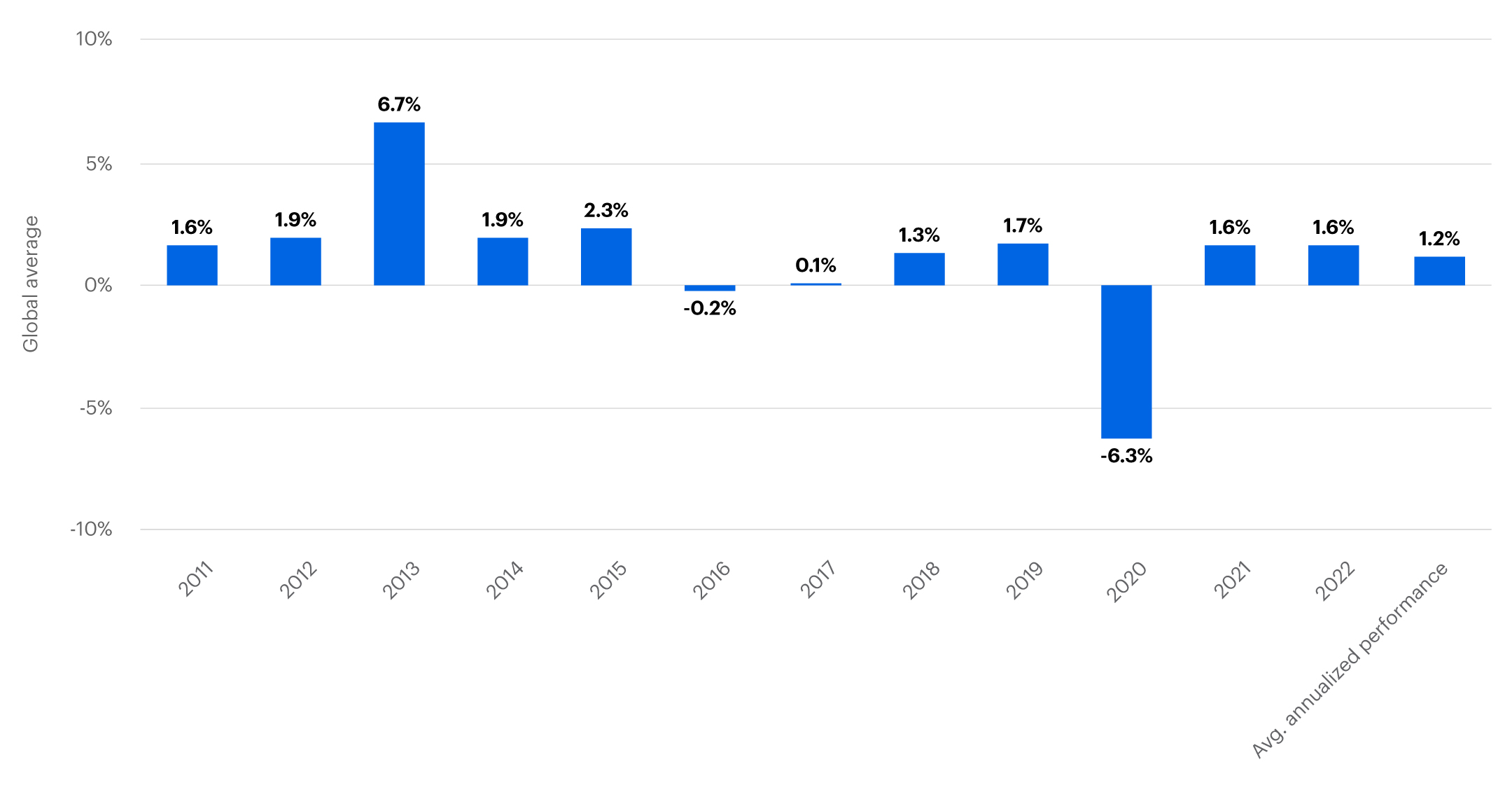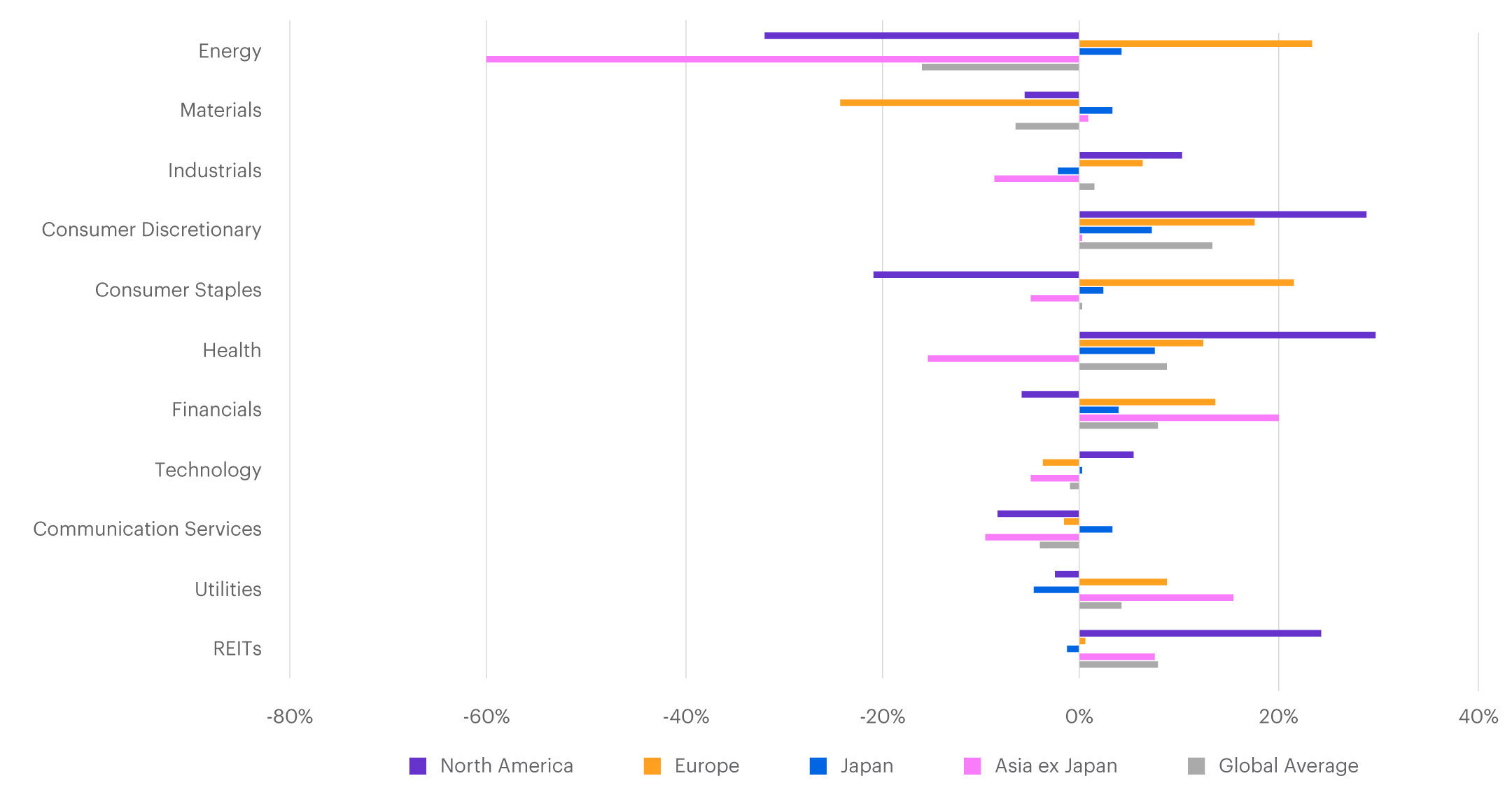How gender diversity can drive corporate results
Morgan Stanley Research
08/24/23Summary: Greater workplace equality continues to boost companies' performance. Learn how it makes a difference in their bottom lines.

As companies have increased their focus on gender diversity, has it made a difference for their bottom lines?
Morgan Stanley Research analysts set out to answer that question more than a decade ago by scoring companies based on gender diversity at all levels—board members, executives, managers, and employees and then comparing those scores against share-price performance. The most recent analysis proves again that gender diversity can drive results.
Based on an examination of 1,875 firms on the MSCI World Index, which is the global stock market index that tracks the performance of large and mid-cap companies across 23 developed countries, those with greater gender diversity—and therefore a higher Holistic Equal Representation Score (HERS)—outperformed less gender-diverse firms (those with lower HERS rankings) by 1.6% in 2022, in line with 2021 performance and the pre-COVID long-term average.1
HER score continues to be an effective strategy across all regions

Source: Refinitiv, FactSet, Morgan Stanley Research, on an annualized basis. Note: Past performance is not indicative of future results
In 2022, against a tough macro backdrop, going long on firms that are more-gender diverse than their sector peers and short on those that are less gender-diverse would have been an effective approach for alpha generation.
Performance varies across regions and sectors
There was a marked difference in results by both geography and industry. For instance, the share prices of companies that are more gender-diverse outperformed by 7.1% in Europe, 3.0% in Japan, and 2.0% in North America. The rest of Asia was an outlier, underperforming for the third year in a row at -5.6%.
Looking at the data by sector, share prices in gender-diverse consumer discretionary companies showed the greatest outperformance at the global level (13.8%) and was the only sector to outperform in every geography. All the other sectors that outperformed overall—Healthcare (9.0%), Financials (8.3%), Real-estate investment trusts (8.2%), Utilities (4.5%), and Industrials (1.8%)—still showed underperformance in at least one geographical region. Similarly, the share prices of gender-diverse energy companies had underperformance of -15.8% globally but was inconsistent by region.
Performance across sector varies across regions, but globally we see outperformance across Industrials, Consumer Discretionary, Health Care, Financials, Utilities, and REITs

Source: Refinitiv, FactSet, Morgan Stanley Research. Note: Past performance is not indicative of future results.
Diversity increasing overall
Gender diversity rose an average of 2% across all regions from 2020 to 2022 as the percentage of women in the workforce increased, according to the same Morgan Stanley study. This increase was led by greater diversity at the board (3.9%) and executive (3.0%) levels—a trend that likely reflects regional and corporate measures to diversify boards and senior executive ranks, Byrd says.
At the same time, global gender diversity at the manager level and for employees below the manager level improved less than expected, by 0.8% and 0.3%, respectively. This was probably a result of the COVID-19 pandemic’s effect on women's participation in the workforce. “Nevertheless, it is worth monitoring how this trend might impact the pipeline for women in more senior executive or even board-level roles in the medium and long terms," says Byrd.
For perspective, the percentage of women in the workforce at all levels in 2022 stood at 37% globally—still below parity levels.
Regulating diversity
The push for greater gender diversity isn’t just a private-sector priority; it’s also gaining urgency from governments. Morgan Stanley analysts find it likely that regulators will favor a "comply or explain" approach over more onerous mandatory steps, and will be monitoring some key proposed and enacted measures around the world to give investors a roadmap:
- In the Americas, this may be the year the Securities and Exchange Commission provides an updated view of human capital management disclosures. Meanwhile, companies listed on the Nasdaq stock exchange have until December to comply with a 2022 rule on diversity requirements or explain why they do not meet the requirements.
- In Europe, the focus will be on the European Union's gender law requiring 40% of nonexecutive director posts, or 33% of all director posts, to be occupied by women by the end of June 2026. In the UK, the first disclosures are expected under a Financial Conduct Authority rule passed in 2022.
- In the Asia-Pacific region, China, Hong Kong, Malaysia, Indonesia, Japan, and Australia are expected to implement rules to promote more gender diversity.
Consider looking for change
Finally, companies that are on a positive trajectory in terms of gender diversity bear watching as much as those that have already achieved high HERS rankings.
Companies with scores that improved from 2020 to 2022 generated alpha of about 0.4% globally during that period—less than the 1.6% outperformance of companies that already have high scores, but still outperformance.
We believe that it’s worth keeping an eye on companies that make sustainable progress on gender diversity in the workplace.
The source of this article, “Gender Diversity Keeps Paying Dividends,” was originally published on March 7, 2023.
How can E*TRADE help?
Core Portfolios
With Core Portfolios, we'll build, manage, and rebalance a diversified ETF portfolio for you. And we can help you invest in socially responsible companies too.
Brokerage account
Investing and trading account
Buy and sell stocks, ETFs, mutual funds, options, bonds, and more.